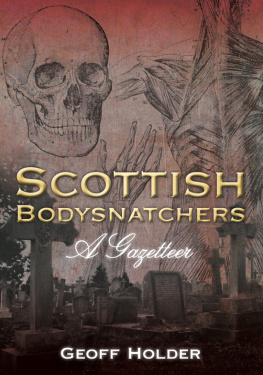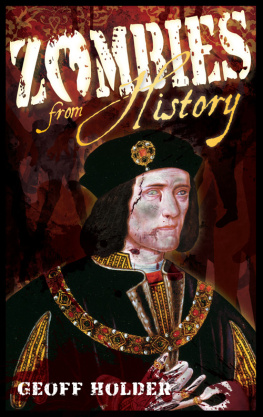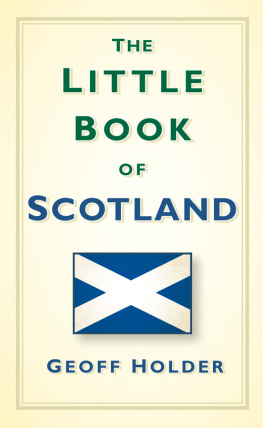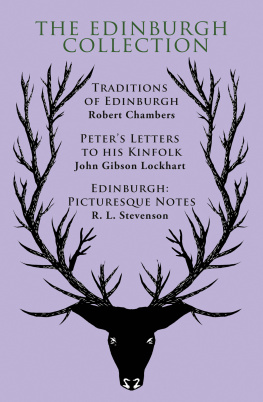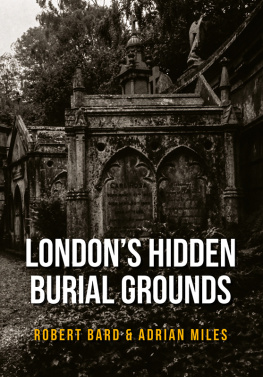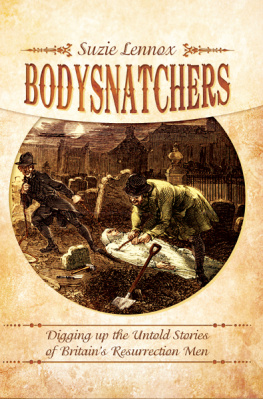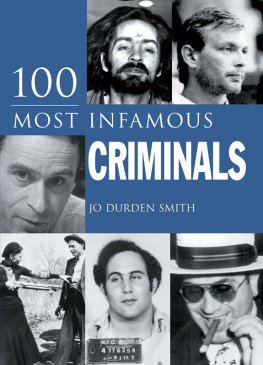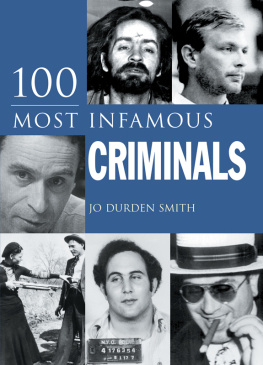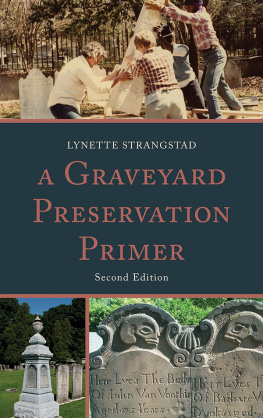S COTTISH
B ODYSNATCHERS
S COTTISH
B ODYSNATCHERS
A Gazetteer
G EOFF H OLDER

ACKNOWLEDGEMENTS
As someone who thinks libraries and museums are treasures beyond measure, I am delighted to thank the following fine institutions: East Lothian Library Services, West Lothian Local History Library, Midlothian Local Studies Library, South Lanarkshire Museums, Dumfries Museums, Scottish Borders Museums, Aberdeenshire Museum Service, and the long-suffering AK Bell Library in Perth. I am deeply grateful to the assistance, knowledge and images supplied by Geoff Bailey, Keeper of Archaeology & Local History at Falkirk Museum; Dalkeith History Society, especially David Smith and Alan Mason; Leslie Thomson; John Arthur of South Leith Parish Church; Cate Ludlow; and Billy Kerr of Irvine (its amazing who you run into in graveyards). And a tip of the stovepipe hat to Norman Adams, bodysnatching pandit of this parish. As ever, Sgolne Dupuy was the bees knees and the cats pyjamas.
This book is one of a series dealing with the strange, mysterious and bizarre. For more information, or to contribute your own story, go to www.geoffholder.co.uk.
This book is dedicated to all those who carry an organ donor card.
See www.organdonation.nhs.uk
First published 2010
The History Press
The Mill, Brimscombe Port
Stroud, Gloucestershire, GL5 2QG
www.thehistorypress.co.uk
This ebook edition first published in 2013
All rights reserved
Geoff Holder, 2010, 2013
The right of Geoff Holder to be identified as the Author of this work has been asserted in accordance with the Copyright, Designs and Patents Act 1988.
This ebook is copyright material and must not be copied, reproduced, transferred, distributed, leased, licensed or publicly performed or used in any way except as specifically permitted in writing by the publishers, as allowed under the terms and conditions under which it was purchased or as strictly permitted by applicable copyright law. Any unauthorised distribution or use of this text may be a direct infringement of the authors and publishers rights, and those responsible may be liable in law accordingly.
EPUB ISBN 978 0 7509 5276 7
Original typesetting by The History Press
CONTENTS
INTRODUCTION

To examine the causes of life, we must first have recourse to death.
Mary Shelley, Frankenstein
Imagine you are in a lonely Scottish churchyard on a dark moonless night. By the light of a shaded lantern you and your companions dig into a fresh grave, carefully depositing the earth on a spread-out sheet. By the time you are waist-deep in the hole, it is the hardest physical labour you have ever undertaken; you are soaked with sweat. Six feet down, your spade bangs against wood. A crowbar-like tool is used to break open the upper coffin. If the funeral has been recent and the winter cold, there will be little smell, but if conditions are the opposite you are hit full in the face with the reek of putrefaction. Your companions lower a rope which is placed around the neck, and in a series of jerks the corpse is hauled up to the surface. The death-shroud is stripped off and left in the coffin after all, a corpse does not belong to anyone but you do not want to be accused of theft of property and the earth tipped back into the hole. The body is placed into a sack, and your team climb over the graveyard wall to a waiting one-horse carriage. If you are lucky, you arrive at your destination in the city without being shot at by watchmen, pursued by an angry mob, or stopped and arrested at a toll-bar or barricade.
Why would anyone desecrate the dead, subject themselves to such harrowing experiences, and take such risks with their life and liberty? The answer was a mix of necessity and greed.
As the conflict with Napoleonic France expanded into the first true World War, the demand for surgeons within the Army and Navy rocketed. Hundreds of young men flocked to what was universally agreed to be the finest medical training-ground in the English-speaking world Scotland. And each student needed to dissect at least one corpse in order to be an effective doctor when faced with injured people in real life. Unfortunately, the law in Britain was hopelessly out of date. The only bodies that could be legitimately obtained were of executed murderers. You could be hanged for dozens of offences, but only murder attracted the additional penalty of post-mortem dissection. Even in an especially violent year, the number of murderers making it to the anatomy classes was just a handful. Meanwhile, hundreds of students could not qualify as doctors unless they had dissected a body.
The answer was obvious, if unpalatable break the law and go against common decency, and steal freshly-buried bodies. Bodysnatching commenced in Edinburgh, home of the best and largest medical school, but then spread to the other two Scottish centres for anatomical education, Glasgow and Aberdeen. At a conservative estimate, perhaps 800 cadavers a year were required (Edinburgh alone had 500 medical students). And so came the rise of the bodysnatchers, the resurrectionists, the sack-em-up men, the susie-lifters, the graveyard ghouls.
WHO WERE THE SNATCHERS?
1. The Medical Students
At the start, the snatchers were the primary consumers medical students (and sometimes even their professors). The motive was obvious each student needed at least one body to complete their studies although sometimes the execution was poor, with amateurish mistakes. Some students only lifted a body once, but poorer ones found they could pay for their tuition fees by selling a stock of cadavers to their colleagues. Sometimes, established country doctors, approached by fellow alumni, acted as informants for the big-city boys.
2. The Gravediggers
Sextons were poorly paid, so were easily bribed. Sometimes they merely informed the resurrectionists about a fresh burial, while on other occasions they participated in the lifting. Others deliberately dug very shallow graves, or even spirited the body out of the coffin before the burial. When a grave was found violated, suspicion frequently fell on the gravedigger, often justifiably.
3. The Professionals
After around 1819, competition between surgeons in Edinburgh raised prices for corpses, so the profits inevitably attracted experienced criminals, sometimes referred to as the scum of the earth. Edinburgh had at least three professional bodysnatching gangs, while Glasgow, where prices were lower, had perhaps one. Aberdeen, cheaper and smaller, had no major gang, more a number of part-time professionals who lifted on the side.
Having cash-conscious criminals on the books made for some colourful episodes. Two sold a body to Dr Lizars, then stole it back from his dissecting room and flogged it to Dr Knox, making a tidy 25 in total. In 1828 a woman showed a letter to a medical man that stated she would shortly be receiving a very valuable box from the country. 2 10s was paid in advance for the presumed contents which proved to be stones packed in straw (the swindlers received 60 days detention in the Bridewell). And Robert Liston, a spectacularly adventurous Edinburgh surgeon who regarded bodysnatching as an extension of his sporting prowess, even hired Ben Crouch, the ex-leader of a London bodysnatching gang, as a tutor!
BURKE AND HARE, AT YOUR SERVICE
It is due to Burke and Hare that everyone has heard of bodysnatching. It is ironic, then, that they were not bodysnatchers. That is, they never dug up a body from a grave they were not resurrection-men. They were, in fact, serial killers and the most prolific serial-killing duo in British history. Between November 1827 and October 1828 they murdered sixteen people in cold blood and sold the corpses to the Edinburgh anatomists.
Next page
